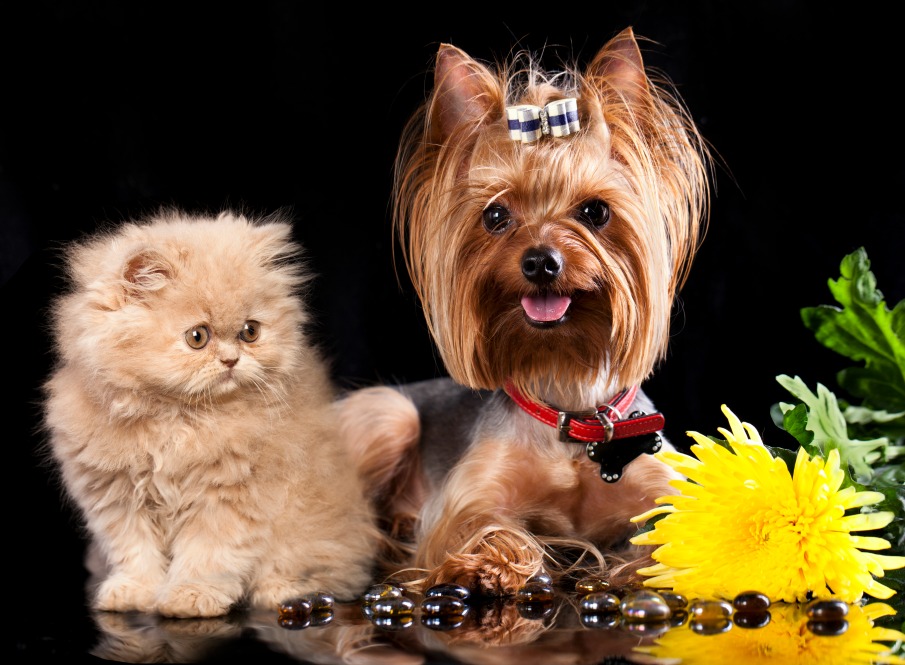 We all love fresh flowers and plants for the beauty they provide and their wonderful aromas that fill our homes. Unfortunately, our pets don’t enjoy flowers the same way we do. Dogs and cats have a natural curiosity and tend to investigate anything new by smelling or tasting. Their inquisitive nature is often adorable, but can sometimes lead to trouble – especially for active pets that have a tendency to eat everything they see. It’s up to us to protect them by knowing which varieties of flowers are safe for pets and identifying which ones can be dangerous to our four-legged friends. While many plants will cause nothing more severe than mild digestive upset should they be ingested by pets, some can cause more serious health issues.
We all love fresh flowers and plants for the beauty they provide and their wonderful aromas that fill our homes. Unfortunately, our pets don’t enjoy flowers the same way we do. Dogs and cats have a natural curiosity and tend to investigate anything new by smelling or tasting. Their inquisitive nature is often adorable, but can sometimes lead to trouble – especially for active pets that have a tendency to eat everything they see. It’s up to us to protect them by knowing which varieties of flowers are safe for pets and identifying which ones can be dangerous to our four-legged friends. While many plants will cause nothing more severe than mild digestive upset should they be ingested by pets, some can cause more serious health issues.
Non-toxic choices
Roses are always a safe choice when it comes to choosing flowers for a home with pets. Once their thorns are removed, they are usually harmless to most animals. Gerbera daisies, sunflowers, snapdragons, and alstroemerias are also safe to have around pets, as are orchids and ferns.
Flowers that may be harmful
According to the ASPCA, Lilies (specifically Lilium and Hemerocallis) are considered to be the most dangerous flowers for pets, particularly for cats, and should be avoided if the pets will be left alone with them. Tulips, baby’s breath, birds of paradise, hyacinths, stargazers, carnations, and daisies can also be toxic to pets if they are ingested.
Alternative options
When sending a bouquet or plant as a gift to a pet owner, it’s always best to seek out a “pet-friendly” bouquet.
There are several options to consider when sending flowers to a pet-friendly household. Alstroemerias (Peruvian lilies) can be substituted for other lilies in bouquets, and ferns can be used in place of baby’s breath when accompanying roses or other flowers.
A common organic solution can also be used to deter pets from getting too close to potentially harmful flowers. A mixture of ten drops of citrus essential oil, one cup of water and one teaspoon of cayenne pepper can be sprayed over the flowers and plants, and should repel even the most curious pets.
In most cases, pets and flowers can safely co-exist in the same house by taking a few simple precautions. Below are lists of some of the most common “pet-friendly” flowers and also of flowers that are known to be toxic. For a more comprehensive list, visit: http://www.aspca.org/pet-care/animal-poison-control/toxic-and-non-toxic-plants, or contact us for more information.
Brief list of “pet-friendly” flowers and plants:
- African daisy
- African violet
- Alyssum
- Bachelors buttons
- Celosia
- Common Snapdragon
- Easter Daisy
- Orchids
- Peruvian lily
- Brazilian lily
- Rose
Toxic to both cats and dogs are:
- Tulips
- Azalea
- Bird of Paradise
- Aloe
- Begonias
- Baby’s Breath
- Amaryllis
- Easter and stargazer lilies can cause serious kidney problems if ingested by cats


